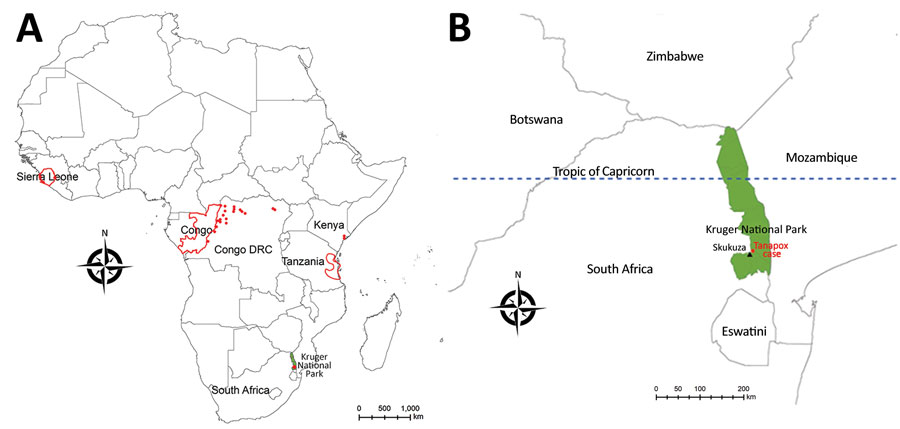Volume 29, Number 6—June 2023
Dispatch
Tanapox, South Africa, 2022
Figure 1

Figure 1. Geographic distribution of recorded human cases of tanapox. A) Locations of previous tanapox cases reported in the literature. Red dots indicate cases acquired locally; red outlines indicate regions of countries visited by travelers to Africa. B) Location of the case acquired in Kruger National Park, South Africa, 2022. Green shading shows the park’s location; black triangle indicates town of Skukuza.
1These first authors contributed equally to this article.
Page created: March 28, 2023
Page updated: May 17, 2023
Page reviewed: May 17, 2023
The conclusions, findings, and opinions expressed by authors contributing to this journal do not necessarily reflect the official position of the U.S. Department of Health and Human Services, the Public Health Service, the Centers for Disease Control and Prevention, or the authors' affiliated institutions. Use of trade names is for identification only and does not imply endorsement by any of the groups named above.